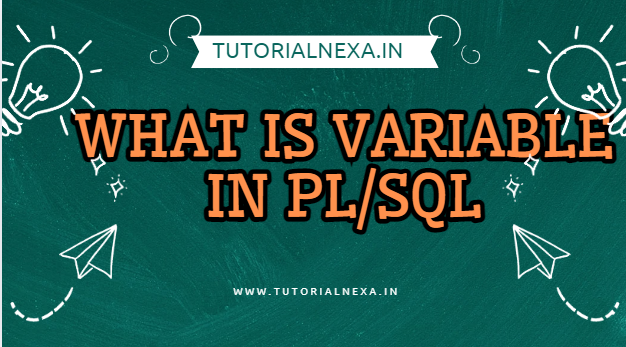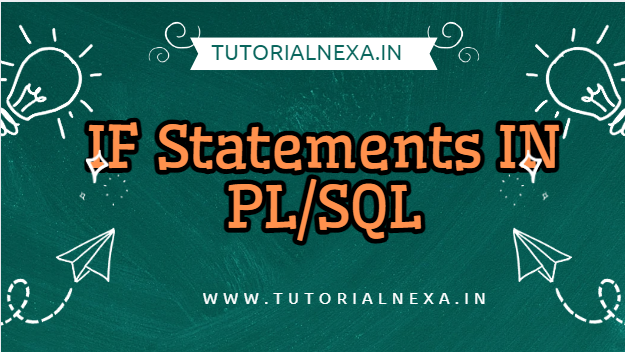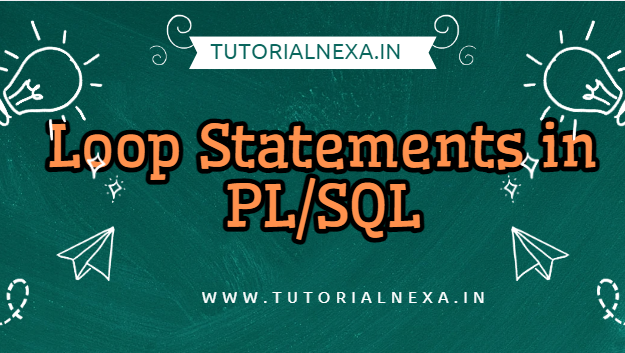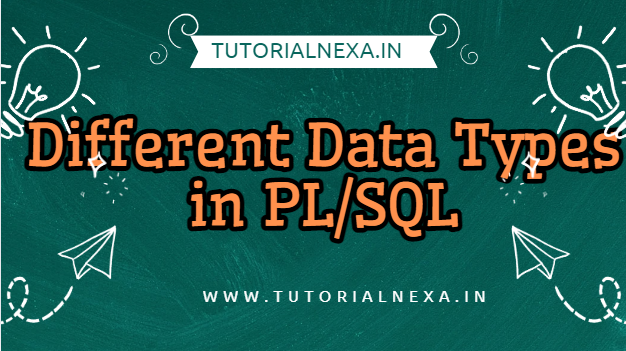What is PL/SQL?

PL/SQL stands for “Procedural Language/Structured Query Language.” It’s a programming language used with databases, and it helps us manage and manipulate data in an organized way. Let’s break it down into points:
Key Points about PL/SQL
| Point | Explanation |
|---|---|
| 1. | PL/SQL is a programming language for databases. |
| 2. | It’s used to interact with Oracle databases mainly. |
| 3. | PL/SQL is like a helper language for SQL. |
| 4. | It allows us to create reusable code blocks called procedures and functions. |
| 5. | These code blocks can be stored in the database for easy access. |
| 6. | PL/SQL helps in data manipulation, querying, and data control. |
| 7. | It supports variables, loops, and conditions for complex tasks. |
| 8. | Exception handling helps deal with errors gracefully. |
| 9. | You can use PL/SQL in triggers to automate actions on database events. |
| 10. | It makes database operations more efficient and secure. |
In Brief:
- PL/SQL is a language for working with databases, like Oracle.
- It’s used alongside SQL for better data handling.
- You can create reusable code blocks (procedures and functions).
- PL/SQL supports variables, loops, and error handling.
- It improves database efficiency and security.
Advantages and Disadvantages of PL/SQL

Advantages:
- Integration with SQL: PL/SQL seamlessly integrates with SQL, allowing you to manipulate and manage data in your databases efficiently.
- Procedural Capabilities: It offers powerful procedural programming features, enabling you to create complex business logic and applications.
- Performance: PL/SQL can execute multiple SQL statements at once, reducing the number of database trips, which enhances performance.
- Security: It provides robust security features, allowing you to control access to database objects and data.
- Error Handling: PL/SQL offers comprehensive error handling mechanisms, making it easier to identify and resolve issues in your code.
- Reusability: You can create and reuse PL/SQL code modules, which saves development time and promotes code consistency.
- Modularity: It supports modular programming, allowing you to break down your code into smaller, manageable units.
- Data Types: PL/SQL provides a wide range of data types for variables and parameters, making it versatile for different data processing tasks.
- Scalability: It scales well for handling large datasets and complex operations, making it suitable for enterprise-level applications.
- Third-Party Integration: PL/SQL can interact with external programs and libraries, enhancing its functionality.
Disadvantages:

- Complexity: Writing complex PL/SQL code can be challenging, especially for beginners.
- Vendor-Specific: PL/SQL is closely tied to Oracle databases, which may limit portability to other database systems.
- Performance Overhead: Poorly optimized PL/SQL code can introduce performance bottlenecks.
- Resource Consumption: PL/SQL code execution can consume significant database server resources.
- Learning Curve: Learning PL/SQL may require additional time and effort compared to simpler query languages.
- Maintenance: Managing and maintaining large PL/SQL codebases can be time-consuming.
- Limited Language Features: It may lack some advanced programming features found in other languages.
- Dependency on Database Version: PL/SQL features can vary between different versions of Oracle databases.
- Debugging: Debugging PL/SQL code can be more challenging than debugging other programming languages.
- Cost: Licensing costs associated with Oracle databases and PL/SQL development tools can be high.
| Advantages | Disadvantages |
|---|---|
| 1. Integration with SQL | 1. Complexity |
| 2. Procedural Capabilities | 2. Vendor-Specific |
| 3. Performance | 3. Performance Overhead |
| 4. Security | 4. Resource Consumption |
| 5. Error Handling | 5. Learning Curve |
| 6. Reusability | 6. Maintenance |
| 7. Modularity | 7. Limited Language Features |
| 8. Data Types | 8. Dependency on Database Version |
| 9. Scalability | 9. Debugging |
| 10. Third-Party Integration | 10. Cost |
SQL vs. PL/SQL: What’s the Difference?
SQL (Structured Query Language):
- Purpose: SQL is used for managing and querying databases.
- Type: It is a language for working with databases and is often referred to as a “query language.”
- Tasks: SQL is used for tasks like selecting data, inserting new data, updating existing data, and deleting data from databases.
- Interactivity: It is typically used interactively, where users write queries to retrieve or manipulate data.
- Examples: “SELECT * FROM employees;” to retrieve all employee records.
PL/SQL (Procedural Language/SQL):
- Purpose: PL/SQL is used for creating programs or procedures that can work with data in databases.
- Type: It is a programming language that extends SQL’s capabilities for procedural tasks.
- Tasks: PL/SQL is used for tasks like writing stored procedures, triggers, functions, and handling business logic.
- Interactivity: It is used to create stored programs that can be called from SQL or other programming languages.
- Examples: Creating a stored procedure to calculate employee salaries based on certain criteria.
Summary:
| Aspect | SQL | PL/SQL |
|---|---|---|
| Purpose | Data querying and management | Program development and data handling |
| Type | Query language | Procedural programming language |
| Tasks | Data retrieval and manipulation | Writing stored procedures, triggers, and functions |
| Interactivity | Interactive queries | Stored programs callable from SQL |
| Examples | “SELECT * FROM table;” | Creating a stored procedure |
In summary, SQL is primarily used for querying and managing data in databases, while PL/SQL is a programming language used to create procedures and handle more complex tasks involving data and business logic within a database environment.
Explaining PL/SQL Block Structure

PL/SQL is a programming language used in Oracle databases to create powerful and efficient database applications. A PL/SQL block is a fundamental structure in PL/SQL that helps you organize your code. Let’s break down the PL/SQL block structure in simple terms:
PL/SQL Block Structure in Points
- What is a PL/SQL Block?
- A PL/SQL block is a section of code that performs a specific task.
- Components of a PL/SQL Block:
- It consists of three parts: Declaration, Execution, and Exception Handling.
- Declaration Part:
- In this part, we declare variables and define their data types.
- Execution Part:
- Here, we write the main logic of our program to perform tasks like calculations, data manipulation, and database operations.
- Exception Handling Part:
- This part deals with error handling, allowing your program to respond gracefully to unexpected issues.
- BEGIN and END:
- A PL/SQL block starts with the keyword
BEGINand ends withEND.
- A PL/SQL block starts with the keyword
- Syntax:
- A basic structure looks like this:plsql
DECLARE
-- Declaration Part
BEGIN
-- Execution Part
EXCEPTION
-- Exception Handling Part
END;
DECLARE(OPTIONAL)-- Declaration PartBEGIN(MANDATORY)-- Execution PartEXCEPTION(OPTIONAL)-- Exception Handling PartEND;(MANDATORY)
PL/SQL Block Structure in Table Format
| Part | Description |
|---|---|
| Declaration Part | Define variables and their data types. |
| Execution Part | Write the main logic of your program. |
| Exception Handling | Deal with errors and exceptions. |
| BEGIN and END | Start and end a PL/SQL block. |
| Syntax | Basic structure: DECLARE, BEGIN, EXCEPTION, END. |
| Variables and Data Types | Define variables for data storage. |
| Flow Control | Use IF-THEN-ELSE and loops for program control. |
| Example | Calculate the total price of items in a cart. |
Understanding the PL/SQL block structure is crucial for building efficient and error-resilient database applications in Oracle.
What is a Variable in PL/SQL?

Variables in PL/SQL are like containers that can hold different types of information, such as numbers, text, or dates. These variables help us store and manipulate data in our PL/SQL programs. Let’s break down the concept of variables in PL/SQL:
Points about Variables in PL/SQL
- Storage Containers: Variables act like storage containers to hold data temporarily.
- Data Types: Each variable has a specific data type, like numbers (integer or decimal), text (strings), or dates, which determines the kind of data it can store.
- Declaring Variables: To use a variable, you must declare it first. This means specifying its name and data type.
- Naming Rules: Variable names should follow naming rules, like starting with a letter and not using spaces or special characters.
- Assigning Values: After declaring, you can assign a value to a variable using the
:=operator. - Changing Values: You can change the value of a variable during program execution.
- Use in Expressions: Variables can be used in calculations or expressions within your PL/SQL program.
- Scope: Variables have a scope, which means they are only accessible within the block of code where they are declared.
- Example: Here’s an example of declaring and using a variable:sql
DECLARE my_number NUMBER := 10; BEGIN DBMS_OUTPUT.PUT_LINE('My Number is: ' || my_number); END;- Benefits: Variables make PL/SQL programs dynamic and allow us to work with data effectively.
Summary in Table Format
| Point | Description |
|---|---|
| 1. Storage Containers | Variables hold data temporarily. |
| 2. Data Types | Each variable has a specific data type. |
| 3. Declaring Variables | You must declare a variable before using it. |
| 4. Naming Rules | Variable names should follow naming rules. |
| 5. Assigning Values | Values are assigned using := operator. |
| 6. Changing Values | You can change a variable’s value during execution. |
| 7. Use in Expressions | Variables can be used in calculations or expressions. |
| 8. Scope | Variables are only accessible within their code block. |
| 9. Example | Example of declaring and using a variable. |
| 10. Benefits | Variables make PL/SQL programs dynamic and data-focused. |
Understanding and using variables is a fundamental concept in PL/SQL, as they enable you to work with and manipulate data effectively within your programs.
When defining variable names in PL/SQL, it’s important to follow naming rules and conventions to make your code readable and maintainable. Here are some common naming rules for variable names:
- Start with a Letter: Variable names must begin with a letter (A-Z or a-z).
- Use Alphanumeric Characters: Variable names can contain letters, numbers (0-9), and underscores (_).
- No Spaces: Do not use spaces within variable names. Use underscores (_) to separate words if needed.
- No Special Characters: Avoid using special characters like @, #, $, %, etc., in variable names.
- Case Sensitivity: PL/SQL is case-insensitive by default, so “myvariable” and “MyVariable” are treated as the same variable. However, it’s a good practice to use consistent casing for readability.
- Descriptive and Meaningful: Choose variable names that are descriptive and convey the purpose or content of the variable. This makes your code more understandable.
- Avoid Reserved Words: Do not use reserved words or keywords in PL/SQL as variable names. Reserved words have specific meanings in the language and should not be used for other purposes.
- CamelCase or Underscore Notation: There are two common conventions for multi-word variable names:
- CamelCase: Start with a lowercase letter and capitalize the first letter of each subsequent word. Example:
myVariableName - Underscore Notation: Use underscores to separate words. Example:
my_variable_name
- CamelCase: Start with a lowercase letter and capitalize the first letter of each subsequent word. Example:
- Consistency: Be consistent in your naming conventions throughout your codebase. If you choose one naming style, stick with it.
- Avoid Abbreviations: While short variable names can be convenient, avoid excessive abbreviation that may make your code cryptic. Aim for a balance between brevity and clarity.
Here are some examples of valid variable names following these naming rules:
employeeNametotal_salescustomer_ageproductPriceorder_number
By following these naming rules and choosing descriptive variable names, you can enhance the readability and maintainability of your PL/SQL code, making it easier for yourself and others to understand and work with.
Control Structures in PL/SQL

Control structures in PL/SQL are like traffic signals for your code. They help you control the flow of your program, deciding which parts should run and when. Just like traffic lights help cars move in an organized way, control structures help your code run smoothly.
Types of Control Structures in PL/SQL:
- Conditional Statements:
- These are like decision-makers in your code.
- You use
IF,ELSE IF, andELSEto make choices. - For example, you can say, “If it’s sunny, go to the beach; otherwise, stay home.”
- Loops:
- Loops help you repeat a set of actions multiple times.
- PL/SQL has
FOR,WHILE, andLOOPloops. - Imagine a robot doing the same task again and again until you say stop.
- Cursors:
- Cursors are like pointers to rows in a database.
- They help you fetch and manipulate data from the database.
- Exception Handling:
- Think of this as a safety net for your code.
- You can catch and handle errors gracefully using
EXCEPTIONblocks.
Example:
Let’s say you’re making a simple program to greet people. You can use control structures like this:
IF itIsMorning THEN
Say "Good Morning!"
ELSE
Say "Hello!"
END IF;
Summary in Points:
| Control Structure | Purpose | Example |
|---|---|---|
| Conditional Statements | Make decisions based on conditions | IF, ELSE IF, ELSE |
| Loops | Repeatedly perform actions | FOR, WHILE, LOOP |
| Cursors | Access and manipulate data from a database | Fetching and updating rows in a table |
| Exception Handling | Handle errors gracefully | EXCEPTION blocks |
Control structures help you write code that can adapt to different situations and make your programs more powerful and flexible.
Understanding IF Statements in Programming

In programming, an “IF statement” is like making a decision in a computer program. It helps the computer decide what to do based on a certain condition. Think of it as giving instructions to the computer: “If something is true, then do this; otherwise, do something else.”
Types of IF Statements
There are three main types of IF statements:
1. IF THEN ENDIF
- Use this when you want the computer to do something if a condition is true.
- If the condition is not true, the computer skips the action.
Example:
IF (temperature > 30)
Print "It's a hot day."
ENDIF
IF (temperature > 30) Print "It's a hot day." ENDIF
2. IF THEN ELSE ENDIF
- Use this when you want the computer to do one thing if a condition is true and another thing if it’s false.
- It’s like having a backup plan.
Example:
IF (age >= 18)
Print "You are an adult."
ELSE
Print "You are not an adult yet."
ENDIF
IF (age >= 18) Print "You are an adult." ELSE Print "You are not an adult yet." ENDIF
3. IF THEN ELSEIF ENDIF
- Use this when you have multiple conditions to check.
- The computer will go through the conditions one by one until it finds one that is true, then it will execute the associated action.
Example:
IF (grade >= 90)
Print "You got an A."
ELSEIF (grade >= 80)
Print "You got a B."
ELSEIF (grade >= 70)
Print "You got a C."
ELSE
Print "You need to improve."
ENDIF
Summary
Here’s a quick summary in points and table format:
| Type | Description | Example |
|---|---|---|
| IF THEN ENDIF | Executes when a condition is true | IF (temperature > 30) Print "Hot day" |
| IF THEN ELSE ENDIF | Executes one action if true, another if false | IF (age >= 18) Print "Adult" ELSE Print "Not adult" |
| IF THEN ELSEIF ENDIF | Checks multiple conditions and acts on the first true one | See the grade example above |
Remember, IF statements help computers make decisions in programs. They are like “If this, then do that” instructions that make your code smart!
What Do You Mean by Loop Statements in PL/SQL?

Introduction
In PL/SQL, loop statements are used to repeat a block of code multiple times until a certain condition is met. They help automate repetitive tasks and make your code more efficient. There are three main types of loop statements in PL/SQL: Basic Loop, For Loop, and While Loop.
1. Basic Loop
- The basic loop is the simplest type of loop statement in PL/SQL.
- It repeatedly executes a block of code until you explicitly exit it using the
EXITstatement.
Example:
DECLARE
counter NUMBER := 1;
BEGIN
LOOP
DBMS_OUTPUT.PUT_LINE('Counter: ' || counter);
counter := counter + 1;
IF counter > 5 THEN
EXIT; -- Exit the loop when counter is greater than 5
END IF;
END LOOP;
END;
2. For Loop
- The for loop in PL/SQL is used to iterate over a range of values, such as a sequence of numbers or a collection.
- It has a built-in loop counter and automatically increments it with each iteration.
Example:
DECLARE
total NUMBER := 0;
BEGIN
FOR i IN 1..5 LOOP
total := total + i;
END LOOP;
DBMS_OUTPUT.PUT_LINE('Total: ' || total);
END;
3. While Loop
- The while loop repeats a block of code as long as a specified condition is true.
- It checks the condition before each iteration and exits when the condition becomes false.
Example:
DECLARE
counter NUMBER := 1;
BEGIN
WHILE counter <= 5 LOOP
DBMS_OUTPUT.PUT_LINE('Counter: ' || counter);
counter := counter + 1;
END LOOP;
END;
Summary
Here’s a summary of loop statements in PL/SQL:
| Loop Type | Description |
|---|---|
| Basic Loop | Repeats code until an EXIT condition is met. |
| For Loop | Iterates over a range of values with a loop counter. |
| While Loop | Repeats code as long as a specified condition is true. |
Loop statements are essential for controlling the flow of your PL/SQL programs and handling repetitive tasks efficiently.
Understanding Triggers in PL/SQL

Triggers in PL/SQL are special pieces of code that automatically execute in response to specific events occurring in a database. They are used to maintain data integrity, automate tasks, and enforce business rules. Triggers come in different types and can be defined to execute either before or after a particular event. Let’s explore what triggers are, their advantages, and the various types of triggers with examples.
Advantages of Triggers
- Automation: Triggers automate repetitive database tasks, reducing manual effort.
- Data Integrity: They help maintain data consistency and integrity by enforcing rules.
- Logging: Triggers can log changes and activities for auditing purposes.
- Complex Logic: They allow for the execution of complex business logic within the database.
- Real-time Response: Triggers respond immediately to data changes or events.
- Security: Triggers can be used to implement security measures, such as access control.
Types of Triggers
There are two main types of triggers: Row-Level and Statement-Level triggers. Additionally, triggers can be classified as Before and After triggers based on when they fire.
Row-Level Triggers
- Before Row-Level Trigger: Fires before each row affected by the triggering statement.sqlCopy code
CREATE OR REPLACE TRIGGER before_row_trigger BEFORE INSERT ON employees FOR EACH ROW BEGIN -- Trigger logic here END; - After Row-Level Trigger: Fires after each row affected by the triggering statement.
CREATE OR REPLACE TRIGGER after_row_trigger AFTER DELETE ON orders FOR EACH ROW BEGIN -- Trigger logic here END;
CREATE OR REPLACE TRIGGER before_row_trigger
BEFORE INSERT ON employees
FOR EACH ROW
BEGIN
-- Trigger logic here
END;
CREATE OR REPLACE TRIGGER after_row_trigger
AFTER DELETE ON orders
FOR EACH ROW
BEGIN
-- Trigger logic here
END;
Statement-Level Triggers
- Before Statement-Level Trigger: Fires once before the triggering statement executes.
CREATE OR REPLACE TRIGGER before_statement_trigger BEFORE DELETE ON customers BEGIN -- Trigger logic here END; - After Statement-Level Trigger: Fires once after the triggering statement executes.
CREATE OR REPLACE TRIGGER after_statement_trigger AFTER UPDATE ON products BEGIN -- Trigger logic here END;
CREATE OR REPLACE TRIGGER before_statement_trigger
BEFORE DELETE ON customers
BEGIN
-- Trigger logic here
END;
CREATE OR REPLACE TRIGGER after_statement_trigger
AFTER UPDATE ON products
BEGIN
-- Trigger logic here
END;
Example
Let’s take a simple example of a trigger that logs changes to the “sales” table before and after each update:
CREATE OR REPLACE TRIGGER log_sales_changes
BEFORE UPDATE OR DELETE ON sales
FOR EACH ROW
BEGIN
IF UPDATING THEN
INSERT INTO sales_log VALUES ('UPDATE', :OLD.sale_id, :NEW.sale_id, SYSDATE);
ELSIF DELETING THEN
INSERT INTO sales_log VALUES ('DELETE', :OLD.sale_id, NULL, SYSDATE);
END IF;
END;
/
Summary
- Triggers in PL/SQL are pieces of code that automatically execute in response to specific database events.
- Advantages of triggers include automation, data integrity, logging, complex logic execution, real-time response, and security.
- Triggers can be row-level or statement-level and can fire before or after an event.
- Row-level triggers fire for each affected row, while statement-level triggers fire once for the entire statement.
- An example trigger logs changes to a “sales” table before and after updates or deletions.
| Type of Trigger | When it Fires | Example |
|---|---|---|
| Before Row-Level | Before each row change | See “before_row_trigger” |
| After Row-Level | After each row change | See “after_row_trigger” |
| Before Statement-Level | Before the statement | See “before_statement_trigger” |
| After Statement-Level | After the statement | See “after_statement_trigger” |
In summary, triggers are valuable tools in PL/SQL that automate tasks, ensure data integrity, and perform various actions based on specific database events. They come in different types and offer a wide range of benefits for managing databases efficiently.
Understanding Cursors in Databases
What is a Cursor?

A cursor in a database is like a virtual pointer or a tool that helps you move through the rows of a result set. It allows you to fetch and manipulate data one row at a time from a database query result.
Types of Cursors
There are mainly two types of cursors:
1. Implicit Cursor
- Automatic Handling: Implicit cursors are automatically created and managed by the database system.
- No Need for Manual Control: You don’t have to worry about opening, fetching, or closing these cursors yourself.
- Used for Single Row: Ideal for queries that return only one row of data.
Example of Implicit Cursor:
Suppose you run a query to retrieve the name of a student with a specific ID from a student database. The implicit cursor will handle fetching the result automatically.
SELECT student_name FROM students WHERE student_id = 123;
SELECT student_name FROM students WHERE student_id = 123;
2. Explicit Cursor
- Manual Control: Explicit cursors require manual control by the programmer.
- Used for Multiple Rows: Suitable for queries that return multiple rows of data.
- Opened, Fetched, and Closed Manually: You must explicitly open, fetch, and close the cursor in your code.
Example of Explicit Cursor:
Let’s say you want to retrieve the names of all students in a particular course from a database. You would use an explicit cursor to fetch and process each row.
DECLARE
CURSOR course_cursor IS
SELECT student_name FROM students WHERE course = 'Math';
BEGIN
OPEN course_cursor;
LOOP
FETCH course_cursor INTO student_name_var;
EXIT WHEN course_cursor%NOTFOUND;
-- Process the student_name_var here
END LOOP;
CLOSE course_cursor;
END;
Summary
Here’s a brief summary of what we’ve learned:
| Aspect | Implicit Cursor | Explicit Cursor |
|---|---|---|
| Automatic Handling | Yes | No (Manual Control) |
| Suitable for | Single Row Queries | Multiple Row Queries |
| Control | Automatic (No manual steps) | Manual (Open, Fetch, Close) |
| Example | Retrieving a single student | Retrieving multiple students in a |
| by ID | specific course |
Cursors are important tools when working with databases, as they allow you to interact with and retrieve data from the database efficiently, whether it’s just one row or many. Understanding the difference between implicit and explicit cursors can help you make the right choice for your database queries.
Difference Between Trigger and Cursor

Trigger
- A trigger is a special type of stored procedure in a database.
- It automatically activates (triggers) when a specific event, such as an insert, update, or delete operation, occurs on a table.
- Triggers are used to enforce data integrity, perform audits, and automate actions in response to data changes.
- They can be defined to execute before or after the triggering event.
- Triggers are associated with a table and are defined within the database schema.
- Triggers are often used for tasks like logging changes or maintaining referential integrity.
Cursor
- A cursor is a database object used to retrieve and manipulate data from a result set in a systematic manner.
- It allows you to iterate through rows of a result set, usually generated by a SQL query.
- Cursors are typically used within stored procedures or functions to process data row by row.
- They provide fine-grained control over data retrieval and modification.
- Cursors can be declared, opened, fetched, and closed, and they can be forward-only or scrollable.
- Cursors are used when you need to perform row-level operations and navigate through query results.
Summary
| Aspect | Trigger | Cursor |
|---|---|---|
| Type | Stored Procedure | Database Object |
| Activation | Automatically on data events | Manually by SQL statement |
| Purpose | Enforce data integrity, automate actions | Retrieve and manipulate data |
| Associated with | A specific table | SQL query result set |
| Control | Limited control over data | Fine-grained data control |
| Usage | Data changes, audits, integrity | Data processing, row-level operations |
In summary, triggers are used to respond to data events automatically and are often associated with a specific table. Cursors, on the other hand, are used to retrieve and manipulate data from query results manually, offering more control over data processing.
Understanding PL/SQL Cursor Attributes

Cursor attributes in PL/SQL are special properties that help us manage and manipulate cursors effectively. These attributes provide valuable information about the status of a cursor and the result set it fetches. Let’s explore four essential cursor attributes: %FOUND, %NOTFOUND, %ISOPEN, and %ROWCOUNT.
%FOUND
%FOUNDis a cursor attribute in PL/SQL.- It is used to check whether a cursor has fetched a row from its associated query.
- When
%FOUNDisTRUE, it means the cursor has successfully fetched at least one row. - If no rows are fetched,
%FOUNDbecomesFALSE.
%NOTFOUND
%NOTFOUNDis another cursor attribute in PL/SQL.- It complements
%FOUNDand helps us check for the absence of fetched rows. - When
%NOTFOUNDisTRUE, it means the cursor did not fetch any rows. - If at least one row is fetched,
%NOTFOUNDbecomesFALSE.
%ISOPEN
%ISOPENis a cursor attribute used to check the status of a cursor.- It tells us whether the cursor is open or closed.
- When
%ISOPENisTRUE, the cursor is open. - If the cursor is closed,
%ISOPENbecomesFALSE.
%ROWCOUNT
%ROWCOUNTis a cursor attribute that provides the count of rows fetched by the cursor.- It helps you keep track of the number of rows retrieved.
%ROWCOUNTis0if no rows are fetched.- If rows are fetched,
%ROWCOUNTholds the count of those rows.
Summary in Points
| Attribute | Description | Values |
|---|---|---|
%FOUND | Checks if the cursor fetched at least one row | TRUE (if rows fetched), FALSE (otherwise) |
%NOTFOUND | Checks if the cursor fetched no rows | TRUE (if no rows fetched), FALSE (otherwise) |
%ISOPEN | Checks if the cursor is open | TRUE (if open), FALSE (if closed) |
%ROWCOUNT | Counts the rows fetched by the cursor | 0 (if no rows fetched), Row count (if rows fetched) |
Understanding these cursor attributes is crucial when working with PL/SQL to manage cursors efficiently and process the retrieved data effectively.
Let’s provide an example to illustrate how these cursor attributes work in a practical PL/SQL scenario.
Suppose we have a PL/SQL block that fetches employee records from a database table and processes them using a cursor. We’ll use the EMPLOYEES table as an example.
DECLARE
CURSOR emp_cursor IS
SELECT employee_id, first_name, last_name FROM employees;
emp_rec emp_cursor%ROWTYPE;
BEGIN
-- Open the cursor
OPEN emp_cursor;
-- Check if the cursor is open
IF emp_cursor%ISOPEN THEN
DBMS_OUTPUT.PUT_LINE('Cursor is open.');
ELSE
DBMS_OUTPUT.PUT_LINE('Cursor is closed.');
END IF;
-- Fetch and process employee records
LOOP
FETCH emp_cursor INTO emp_rec;
-- Check if a row is found
IF emp_cursor%FOUND THEN
DBMS_OUTPUT.PUT_LINE('Found employee: ' || emp_rec.first_name || ' ' || emp_rec.last_name);
ELSE
DBMS_OUTPUT.PUT_LINE('No more employees found.');
EXIT;
END IF;
END LOOP;
-- Check the row count
DBMS_OUTPUT.PUT_LINE('Total rows fetched: ' || emp_cursor%ROWCOUNT);
-- Close the cursor
CLOSE emp_cursor;
-- Check if the cursor is open
IF emp_cursor%ISOPEN THEN
DBMS_OUTPUT.PUT_LINE('Cursor is still open.');
ELSE
DBMS_OUTPUT.PUT_LINE('Cursor is closed.');
END IF;
END;
/
In this example:
- We declare a cursor
emp_cursorto fetch employee records from theEMPLOYEEStable. - We use
%ISOPENto check if the cursor is open before and after processing. - We use
%FOUNDto check if a row is found during each fetch operation. %ROWCOUNTis used to keep track of the total number of rows fetched.
This example helps you see how these cursor attributes can be used to manage and process data retrieved using a cursor in a PL/SQL block.
Explaining Different Data Types in PL/SQL

PL/SQL (Procedural Language/Structured Query Language) uses various data types to store and manipulate data. These data types can be broadly categorized into five main categories: Scalar, Composite, Reference, LOB (Large Object), and BLOB (Binary Large Object).
Scalar Data Types:
Scalar data types represent single values.
- NUMBER: Used for numeric values, including integers and decimals.
- VARCHAR2: Stores character strings of variable length.
- CHAR: Stores fixed-length character strings.
- DATE: Holds date and time values.
- BOOLEAN: Represents true or false values.
- BINARY_INTEGER: Stores whole numbers.
Composite Data Types:
Composite data types can hold multiple values.
- RECORD: A user-defined structure that can contain multiple fields.
- TABLE: Used for collections of data, similar to arrays or lists.
- VARRAY: A variable-sized array that can hold multiple values of the same type.
- PL/SQL TABLE: An indexed table that can store data.
Reference Data Types:
Reference data types are used for referencing objects.
- REF CURSOR: A reference to a result set returned by a query.
- REF: A reference to an object type.
LOB (Large Object) Data Types:
LOB data types are used to store large data objects.
- CLOB (Character Large Object): Used for large character strings.
- BLOB (Binary Large Object): Stores binary data, such as images or files.
- NCLOB (National Character Large Object): Stores large character strings in a national character set.
Summary:
Here’s a summary of the different data types in PL/SQL:
| Data Type | Description |
|---|---|
| Scalar | – NUMBER, VARCHAR2, CHAR, DATE, BOOLEAN, BINARY_INTEGER |
| Composite | – RECORD, TABLE, VARRAY, PL/SQL TABLE |
| Reference | – REF CURSOR, REF |
| LOB (Large Object) | – CLOB, BLOB, NCLOB |
Understanding these data types is crucial when working with PL/SQL, as they determine how data is stored and manipulated within your programs.
Practical :Generating a Series in PL/SQL: 1, 5, 9, 13…

Introduction
In this lesson, we will learn how to write a PL/SQL program to generate a series of numbers that starts with 1 and increases by 4 each time, up to a maximum of 60.
PL/SQL Code
Here is the PL/SQL code to generate the series:
DECLARE
current_number NUMBER := 1;
BEGIN
WHILE current_number <= 60 LOOP
-- Display the current number
DBMS_OUTPUT.PUT_LINE(current_number);
-- Move to the next number in the series (increasing by 4)
current_number := current_number + 4;
END LOOP;
END;
/
Explanation
- We start with a variable
current_numberinitialized to 1. - Inside a
BEGINandENDblock, we use aWHILEloop to generate numbers whilecurrent_numberis less than or equal to 60. - Inside the loop, we use
DBMS_OUTPUT.PUT_LINEto display the current number. - We then increment
current_numberby 4 in each iteration to generate the next number in the series.
Summary
Here’s a summary of the PL/SQL program to generate the series:
| Step | Description |
|---|---|
| 1. Initialize | Start with current_number set to 1. |
| 2. Loop | Use a WHILE loop to generate numbers up to 60. |
| 3. Display | Print the current number using DBMS_OUTPUT.PUT_LINE. |
| 4. Increment | Increase current_number by 4 in each iteration. |
Conclusion
With this program, you can easily generate the series 1, 5, 9, 13, and so on, up to 60 using PL/SQL. It’s a simple example of how to use loops and variables in PL/SQL to achieve a specific task.
Practical : How to Calculate the Area of a Rectangle Using PL/SQL

Introduction
In this lesson, we’ll learn how to write a simple PL/SQL program to calculate the area of a rectangle using its length and width. We will also explore a pattern of numbers: 1, 5, 9, 13, and so on.
PL/SQL Code for Calculating Rectangle Area
Let’s start by writing a PL/SQL program to find the area of a rectangle. We’ll use the formula Area = Length x Width.
DECLARE
Length NUMBER := 5; -- You can change the values as needed
Width NUMBER := 9;
Area NUMBER;
BEGIN
Area := Length * Width;
DBMS_OUTPUT.PUT_LINE('The area of the rectangle is: ' || Area);
END;
/
- We declare two variables,
LengthandWidth, and set their values to 5 and 9, respectively. You can change these values as per your requirements. - The
Areavariable will store the result of the calculation. - Inside the
BEGINblock, we calculate the area by multiplyingLengthandWidth, and then display the result usingDBMS_OUTPUT.PUT_LINE.
Pattern: 1, 5, 9, 13, …
This pattern represents an arithmetic sequence with a common difference of 4. To find the nth term in this sequence, you can use the formula nth term = first term + (n - 1) x common difference.
PL/SQL Code for Finding the nth Term

Now, let’s write a PL/SQL program to find the nth term in the pattern 1, 5, 9, 13, ....
DECLARE
n NUMBER := 7; -- Change the value of 'n' as needed
FirstTerm NUMBER := 1;
CommonDifference NUMBER := 4;
NthTerm NUMBER;
BEGIN
NthTerm := FirstTerm + (n - 1) * CommonDifference;
DBMS_OUTPUT.PUT_LINE('The ' || n || 'th term in the pattern is: ' || NthTerm);
END;
/
- In this code, we declare the
nvariable to represent the term we want to find. You can change the value ofnto find different terms. FirstTermrepresents the first term in the sequence (which is 1), andCommonDifferenceis the difference between consecutive terms (which is 4).- We calculate the
NthTermusing the formula mentioned above and display the result usingDBMS_OUTPUT.PUT_LINE.
Summary in Points
| Aspect | Rectangle Area Calculation | Pattern: 1, 5, 9, 13, … |
|---|---|---|
| PL/SQL Code | See above example | See above example |
| Variables | Length, Width | n, FirstTerm, CommonDiff |
| Formula | Area = Length x Width | nth term = FirstTerm + (n – 1) x CommonDiff |
| Output Displayed | The area of the rectangle is: [Area] | The [n]th term in the pattern is: [NthTerm] |
| Customize Values | Adjust Length and Width values as needed | Change ‘n’ to find different terms |
| Calculation Explanation | Multiply Length and Width to find the area | Use the arithmetic sequence formula to find the nth term |
| Execution | Run the code | Run the code |
Now you have PL/SQL code for calculating the area of a rectangle and finding terms in the given pattern, along with a summary in a table format for easy reference. Feel free to modify the values and experiment with different inputs.